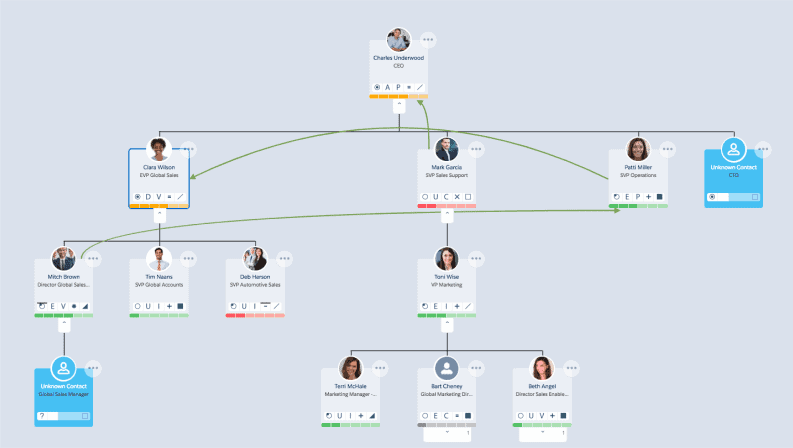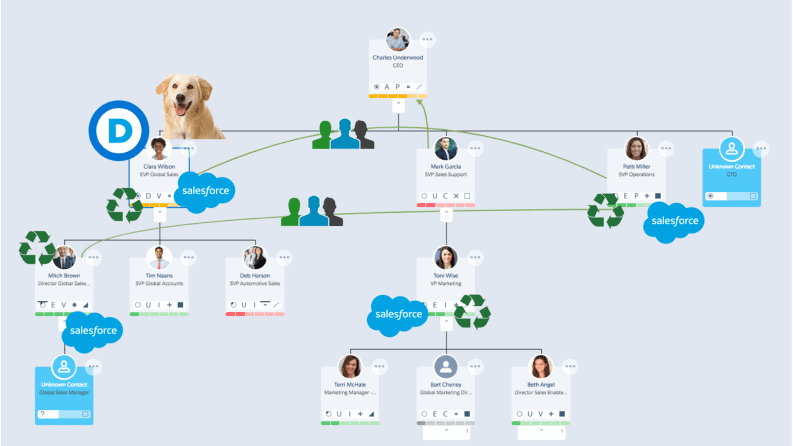I want to tell you a story about how investing time to learn about the person behind the buyer helped me in a very large sale.
It was April 2015 and I participated in a Deal Review – at Altify, we call it an Opportunity Test and Improve – for a multi-million dollar deal with a Fortune 500 company. I will call this company XCo. The purpose of the Deal Review was to assess where we were in the sale, help the seller to identify risks and vulnerabilities, and come up with a plan of action to mitigate those risks. This deal passed the Truth Test – we were convinced that it was in XCo‘s interest to purchase our solution.
As the salesperson went through the methodology and presented the deal, on the surface it felt like we should win. The opportunity had been qualified, budget was allocated, and we had been selected as one of the two finalists. We clearly had a great solution fit, a combination of enterprise sales methodology and intelligent software that would uniquely meet the requirements of the customer. There was no question that we had product superiority. Our team had studiously examined their business, worked out XCo’s return on investment, and provide an ROI framework that helped the customer understand how our solution would provide greater return than the alternative. However, with that clear advantage, it was unclear as to why XCo had not yet made the decision, and made it in our favor.
I remember looking at all the people in the evaluation team – there were 15 people involved that would make the decision that then had to be approved by the CEO. Clearly XCo’s evaluation team was taking this project very seriously. Their goal was to dramatically change the way in which XCo’s sales and support organizations would interact with their customers. They wanted to develop long term partnerships with their customers, increase the value that XCo would deliver by better understanding their customers’ goals, and make sure that the solution offered was optimally matched to their customers’ needs. The Relationship Map for the opportunity looked something like this. (Names and photos changed.)
 Most of the people on the map were favorably disposed to our solution, but Clara, the Decision Maker, and a few other key influencers remained Neutral. We looked at all of their Formal Decision Criteria and could honestly say that we were equal or better in all areas. We collated all the Informal Decision Criteria that we had gathered though our interactions with XCo, and we felt pretty good about that too. We provided stellar customer references. But, even though it all looked pretty good, there had to be a reason why we had not already been selected. The other company on the shortlist was the incumbent, but we had learned that XCo was not overly pleased with them and that this was why this particular project had been initiated.
Most of the people on the map were favorably disposed to our solution, but Clara, the Decision Maker, and a few other key influencers remained Neutral. We looked at all of their Formal Decision Criteria and could honestly say that we were equal or better in all areas. We collated all the Informal Decision Criteria that we had gathered though our interactions with XCo, and we felt pretty good about that too. We provided stellar customer references. But, even though it all looked pretty good, there had to be a reason why we had not already been selected. The other company on the shortlist was the incumbent, but we had learned that XCo was not overly pleased with them and that this was why this particular project had been initiated.
Applying the tried and tested adage of ‘Only the paranoid survive,’ we assumed we were losing, and went back though all of the factors in the opportunity to answer that critical question: “If we were to lose, what would be the top three reasons?” When you do that kind of exercise, openly and honestly, it prompts some deep critical thinking. The obvious answers of price, some unknown decision maker, or competitor’s relationship, always come to the fore. We felt pretty good about the first two. We felt that we were probably a little more expensive than the competitor, but that the extraordinary value we could deliver would compensate for that. XCo had already acknowledged this point. Also, XCo had been very transparent on who was involved in the decision making process. There was a wonderful sense of integrity in everything they had done so far and we believed what they said. Having said that, we had still triangulated what we were told with many different sources and were comfortable that we knew everyone. There was always a risk that the relationship with the incumbent would not be something that we could overcome, but we had heard enough to know that that door was open.
After all of the analysis we came down to one thing: XCo was sincere about developing long term partnerships with their customers. Were they convinced that we were prepared to hold ourselves to the same standard? Did they in fact believe that our two companies could work together over the long term? Even though we had a clearly superior solution, and had delivered benefit to our other customers, were we people they felt they could depend on? We knew that we were – but accepted that, if they did not believe that we were culturally compatible, then they would likely not choose us.
I can remember it now as if it was yesterday. We went ‘social sleuthing.’ We needed to find out more about the people on XCo’s evaluation committee to determine for ourselves whether we were culturally aligned. Looking on LinkedIn, for each of the people, we discovered from their activities some of things that interested them: What did they publish or post? Whose posts and shares did they share with their own followers? Were there LinkedIn groups in which they were active, or particular influencers or companies that they followed? People might follow Richard Branson for a different reason than they would follow Sheryl Sandberg or Bill Gates, Steve Jobs or Warren Buffett. If they followed their current or past company it indicated a level of engagement in their work. We looked at their work history. It turned out that many of the buying committee had worked together in a previous company over the span of a decade. These people were close, loyal, and a tight-knit group. Almost all of them followed Salesforce, a fact that was not overly surprising given that they had recently had made a very significant investment in Salesforce’s CRM solutions.
Where LinkedIn gives a great sense of someone’s professional perspective, their activities and posts on Twitter and Facebook tend to paint more personal pictures. Without bringing you through a blow-by-blow of our investigation, we learned that the majority of our buying group were politically slightly left of center, family was very important, they cared about the environment in a socially-conscious way, and long term relationships were important. There were many sports fans and dog-lovers among them.
Overall, we got a picture of a group who had worked closely together, were passionate about many things, cared about doing the right thing, and, from a business as well as personal perspective, cared about long term trusting relationships.
If I annotated the Relationship Map for XCo, it would look something like this:
 We decided to change our approach. XCo definitely had all of the attributes of a Collaborative culture. The ‘bake-off’ between our company and the competitor was coming up and, in addition to being asked to present our solution and show how it met their needs, there was a segment at the end where we were asked to highlight our five key differentiators.
We decided to change our approach. XCo definitely had all of the attributes of a Collaborative culture. The ‘bake-off’ between our company and the competitor was coming up and, in addition to being asked to present our solution and show how it met their needs, there was a segment at the end where we were asked to highlight our five key differentiators.
The reality was that even though we knew we had a superior solution – our technology was the gold standard (because we had about a 10-year start on everyone else in the industry), our methodology was stronger – 20 years of sales process and methodology innovation, and our supporting services were best-in-class – we also realized that if we focused only on those items we were going to lose. The key differentiator that mattered in this situation was our approach to long term customer relationships. This is a core value of everyone in our company, was something that we had dramatically undersold, and in fact was probably the most significant thing that they, the customer’s buying committee, should care about.
Having already demonstrated that we understood their business problem and shown how we could help XCo rapidly grow their business with a new Customer First model, we presented our five key differentiators in this order:
- Our Employees
- Our Customers
- Our Customer Success Team
- Our Methodology
- Our Technology.
What made this easy was that it was a reflection of who we are as a company. The employees come first, because if they are not engaged and excited to come to work every day, they would not be enthused about helping our customers succeed. We spoke about our customers: Matt, Helen, Bob, Sarah, Jeff, another Jeff, and Michelle. These were individuals from our customers that we had come to know well as we supported their efforts to transform their company’s businesses. We used photos of the people, not company logos. The relationships we had (and still have) with these people were a testament to the long term partnerships that we build, sincerely and in a sustained manner.
Most of the time was spent on these first two topics. Then we went on to talk about the Customer Success team, our methodology and our technology.
I am not exaggerating when I say that Clara’s eye welled up. She cared so much about doing the right thing for her company and her customers that her passion shone through in that extra twinkle in her eyes.
Later that week we learned that we had won a multi-million dollar, multi-year relationship with this great company. Three years on, our business with XCo has grown. XCo has been phenomenally successful with our solution, and I couldn’t be happier for them.
So, that was a happy ending!
Cultural alignment matters, not just in theory, but in practice too.
(This is an extract from my latest book: Digital Sales Transformation in a Customer First World.)
Follow me on Twitter or connect on LinkedIn. I want you to agree or disagree with me, but most of all: I want you to bring passion to the conversation.



